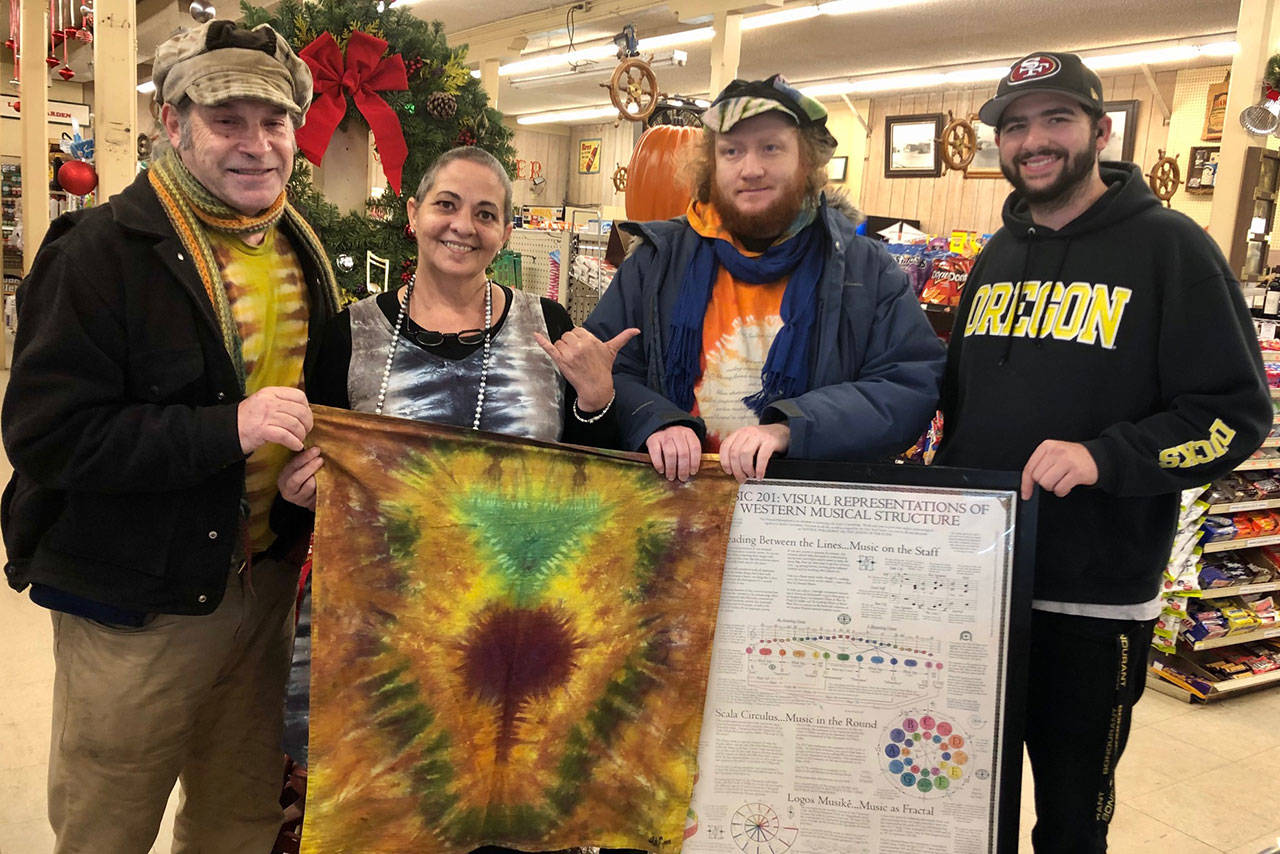Rod Smith, island dye artist, never knows exactly how his first drop of ink on a piece of fabric will unfold: how one drop is absorbed, spreads and creates unexpected outcomes. As in art, Smith’s life, and the people he has met along the way, have led him along unexpected paths.
“I am a creative child of this island,” Smith said. “Everything I do is because of this creative community.”
His dye art fabrics are available on the island, but Smith will soon find his work on a much bigger island than Vashon — Japan. Come January, a quilter will show off her work, which includes Smith’s dye art fabric, at the Tokyo International Quilt Festival — the Superbowl for quilters with over 50,000 attendees.
Mary Cesar, who lives in Hawaii and has been teaching quilting to students from Japan and Hawaii for over 30 years, said Smith’s fabric was used at the international event last year and that it was “pretty popular.”
“The tie-dye that he does in the bar design is pretty different from other tie-dye fabrics,” she said.
Asked about how Smith feels about his work being shown at the festival, he said it surprised him.
“I never saw it coming,” said Smith. “All of these amazing connections happened for me at the Burton Coffee Stand.”
In a seemingly chance meet-up at the coffee stand, Smith met Cesar, who frequently visited Vashon for the Stitching Girls Quilt Retreat at Camp Burton. Cesar said that she knew she found something uniquely special for her quilting designs and commissioned several of Smith’s dye pieces for her award-winning quilts.
Creating art from dye pigments and fabric was not on Smith’s early radar. Smith graduated with a mechanical engineering degree from North Carolina State University in 1983. His engineer mind, occupied with designing intricate and complex blueprints and fire sprinkler systems, was always curious, which led to the exploration of musical theory. When he moved to Vashon Island in 1988, he found himself surrounded by like-minded, curious individuals who expressed themselves artistically and authentically. He felt as if he was finally home, Smith said.
As he explored his musical passions, playing in bands like Tribal Voices and Song and Legend, what rose up was a series of visual representations of the relationships between color, music and math. He created intricate poster art of these relationships, hand-colored and influenced by Irish manuscripts from time spent abroad, that ended up on the walls of famous architects and international colleges.
It was when he and fellow island musicians visited a music festival in 2010 that he first fell in love with the beauty of dye art. The visual representations of music and color transformed onto pieces of his fabric art. Each dye color corresponds to a musical note, his favorite being a deep violet-blue which Smith relates to A minor.
“[This] wires into the bigger arc of my work that I do,” Smith said. “[It’s] an expression of musical structure.”
Just as important as the art he creates is an investment in the local art community, Smith said. Recently, Smith has taken on two apprentices with special needs, Gabriele Smith and Alex Raimondo-Kerber.
Gabriele Smith loves the “colors and art,” he said, and displayed a T-shirt he dyed with a handwritten poem he wrote placed in the middle of the design. Gabriele and Rod Smith are working on a signature color that they will call “Gabriele Blue,” for Gabriele’s middle name.
Raimondo-Kerber, a deaf community member who works at the Burton Store, is looking forward to learning how to mix the colors, Smith said. But don’t ask any of the artists exactly what ‘Gabriele Blue’ is — it’s a secret recipe.
Smith is pleased to be creating an art legacy, “creating a lineage, something that goes on and is … associated with this place.”
“I can remember the very first drop of dye, it was Chinese Red,” Smith said. “I would have never thought that just gazing upon these relationships of color and form would give me the kind of, satisfaction that it has.”


